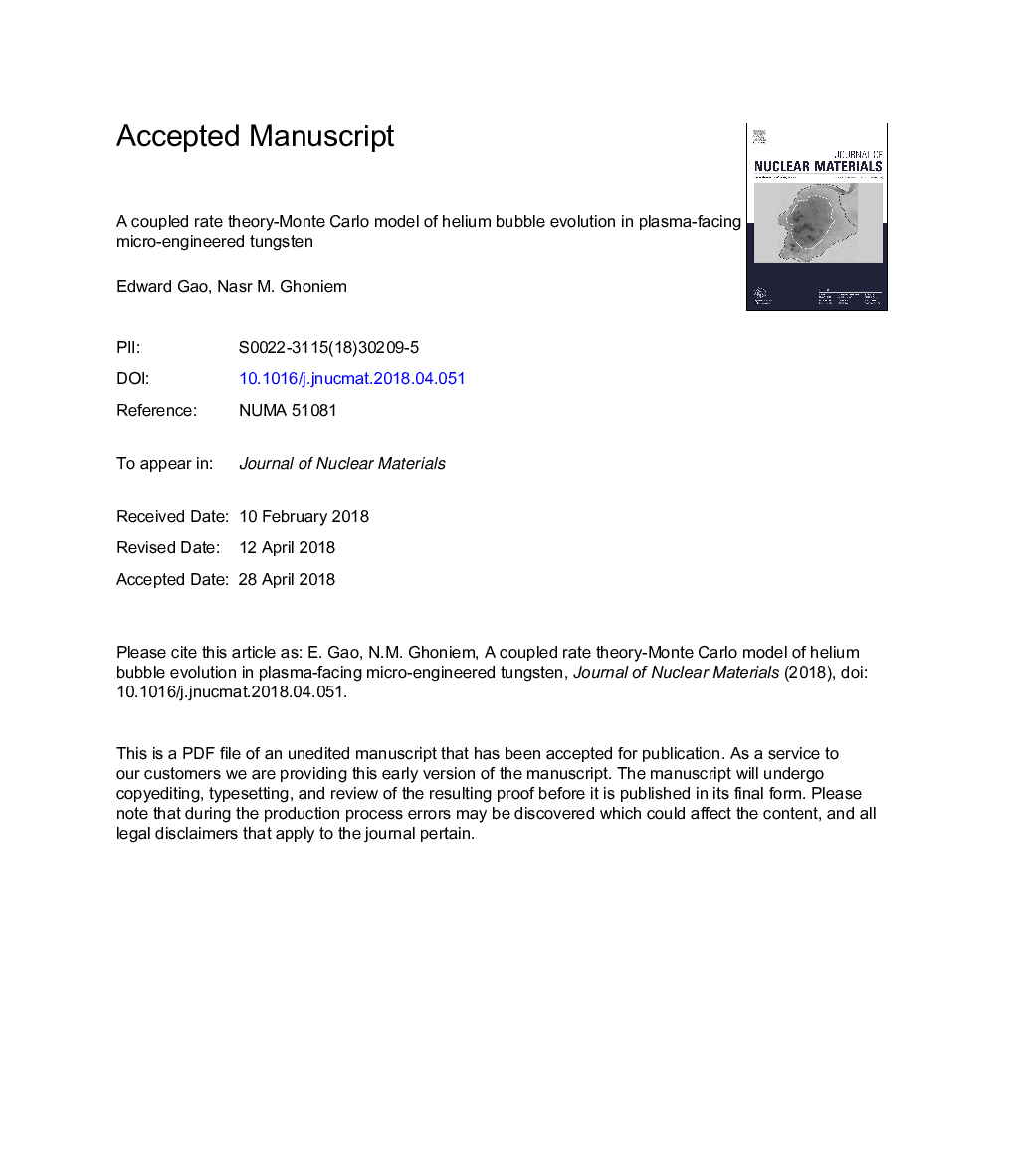| کد مقاله | کد نشریه | سال انتشار | مقاله انگلیسی | نسخه تمام متن |
|---|---|---|---|---|
| 7962947 | 1514137 | 2018 | 28 صفحه PDF | دانلود رایگان |
عنوان انگلیسی مقاله ISI
A coupled rate theory-Monte Carlo model of helium bubble evolution in plasma-facing micro-engineered tungsten
ترجمه فارسی عنوان
نظریه سرعت ارتباطی - مدل مونت کارلو تکامل حباب هلیوم در تنگستن میکرو مهندسی پلاسما
دانلود مقاله + سفارش ترجمه
دانلود مقاله ISI انگلیسی
رایگان برای ایرانیان
موضوعات مرتبط
مهندسی و علوم پایه
مهندسی انرژی
انرژی هسته ای و مهندسی
چکیده انگلیسی
A multiscale model of helium bubble evolution in plasma-facing materials is developed. The model links different stages of helium bubble evolution: deposition, nucleation, growth, motion, and coalescence. Helium deposition is simulated with the SRIM Monte Carlo program to give spatial information on helium and displacement damage distributions near the surface. This deposition profile is then introduced into a space-dependent rate theory of bubble nucleation and growth to describe the early stages of the distribution and size of helium bubbles. The coarsening stage of bubble evolution as a result of whole bubble motion, interaction, and coalescence is modeled by a new Object Kinetic Monte Carlo (OKMC) model, for which initial conditions are taken from the mean-field rate theory calculations. The model is compared to experimental data on low-energy helium plasma interaction with micro-engineered tungsten (W), and on high-energy helium ion deposition in flat W samples. Novel features of the multiscale model include: (1) space-dependent rate theory; (2) OKMC model of bubble motion in stress and temperature fields; and (3) application of the model to micro-engineered materials, and comparison with experiments on the same time-scale. At low helium ion energy, it is found that the mechanism of trap mutation is essential in achieving good agreement with experimental measurements. On the other hand, good agreement with experiments at high incident ion energy and temperature showed the importance of bubble coalescence and coarsening as main mechanisms. The results of the model are compared with experiments on flat W surfaces irradiated at high ion energy (30â¯keV), and with micro-engineered W, where the surface is coated with high-density micro-pillars at low ion energy (around 100â¯eV). The predicted average bubble radius and density are in qualitative agreement with experimental results.
ناشر
Database: Elsevier - ScienceDirect (ساینس دایرکت)
Journal: Journal of Nuclear Materials - Volume 509, October 2018, Pages 577-590
Journal: Journal of Nuclear Materials - Volume 509, October 2018, Pages 577-590
نویسندگان
Edward Gao, Nasr M. Ghoniem,
